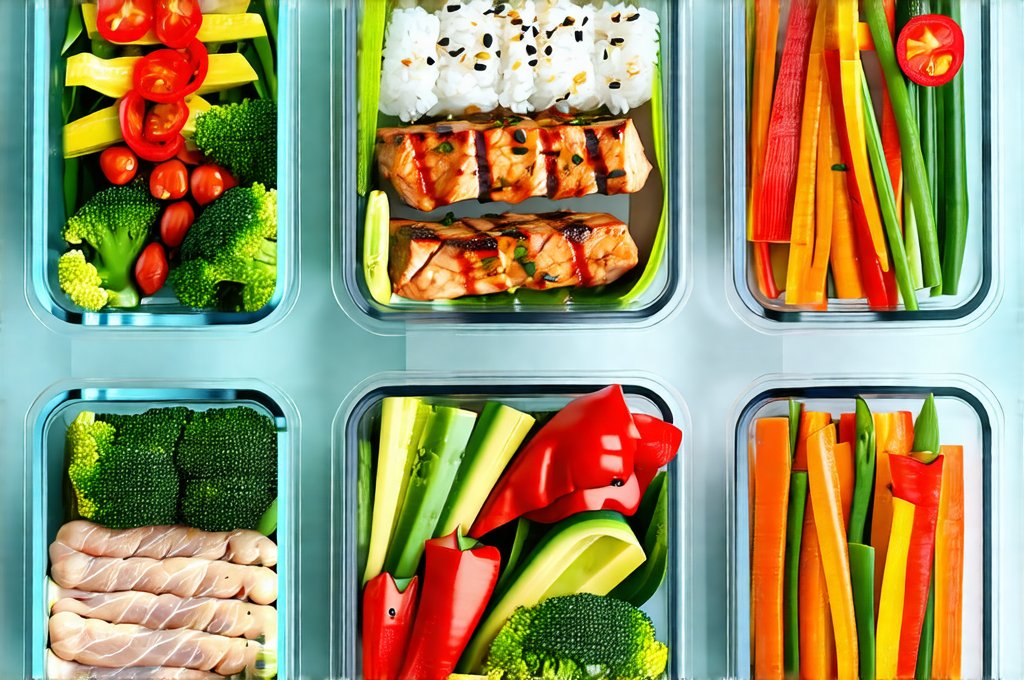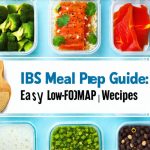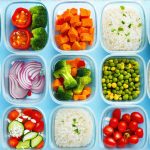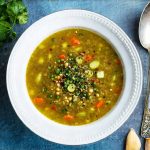Digestion is often an overlooked aspect of overall health, yet it’s foundational to how we feel, our energy levels, and even our mental wellbeing. Many people experience bloating, discomfort, or irregularity without realizing the significant impact their diet has on their gut microbiome and digestive processes. A proactive approach to digestive health doesn’t require drastic changes; instead, it thrives on consistent, mindful choices that support a happy and healthy gut. This begins with understanding that what we eat—and how we prepare it—plays a crucial role in optimizing digestion.
Building a weekly meal prep routine focused on digestive health isn’t about restrictive dieting or eliminating entire food groups. It’s about strategically incorporating foods that are easily digestible, promote beneficial bacteria growth, and minimize inflammation. This means prioritizing whole, unprocessed foods rich in fiber, prebiotics, and probiotics. The goal is to create a system where nourishing your gut becomes an effortless part of your week, leaving you feeling energized, comfortable, and confident in your digestive wellbeing. It’s about creating sustainable habits that support long-term health rather than quick fixes or temporary solutions. You can also learn how to build a recovery meal after a bout of indigestion, helping you get back on track quickly.
Understanding the Foundations of Digestive Health Meal Prep
Digestive health is complex, influenced by factors beyond just food, including stress levels, sleep quality, and physical activity. However, diet remains a cornerstone for optimal function. A key principle in digestive health meal prep is understanding how different foods impact your system. For instance, highly processed foods often lack the fiber necessary for regular bowel movements, while excessive amounts of sugar can feed harmful bacteria in the gut. Conversely, incorporating soluble and insoluble fiber from sources like fruits, vegetables, and whole grains helps regulate digestion and promotes a diverse microbiome. Consider planning a safe weekly menu if you have a sensitive digestive system.
Prebiotics and probiotics are particularly important components to include in your weekly meal prep. Prebiotics act as food for the beneficial bacteria in our gut, encouraging their growth and activity. Sources include garlic, onions, asparagus, bananas, and oats. Probiotics, found in fermented foods like yogurt, kefir, sauerkraut, and kimchi, introduce live beneficial bacteria directly into the digestive system, helping to restore balance. Combining both pre- and probiotic-rich foods is a powerful strategy for supporting gut health. You can also learn about building a digestive routine to support gut health in the long term.
Finally, mindful preparation techniques can significantly impact digestibility. For example, soaking legumes before cooking reduces phytates which can inhibit nutrient absorption and cause gas, while steaming vegetables preserves nutrients and makes them easier to digest than frying. Paying attention to these details ensures you’re maximizing the nutritional benefits of your food while minimizing digestive discomfort.
Building Your Weekly Meal Prep Plan
A successful meal prep routine for digestive health starts with planning. Begin by listing out 5-7 meals or components (breakfast, lunch, dinner, snacks) that align with your dietary needs and preferences, focusing on whole foods. Consider what’s in season to maximize flavor and affordability. Don’t be afraid to repeat elements – a batch of quinoa can serve as the base for multiple meals throughout the week. The key is to create a flexible plan you can realistically maintain.
Once you have your meal ideas, create a detailed grocery list organized by store section (produce, pantry, refrigerated). This streamlines the shopping process and reduces impulse purchases. Allocate a dedicated time slot – typically 2-3 hours – for prepping all your ingredients. This might involve chopping vegetables, cooking grains, marinating proteins, or portioning out snacks. Finally, choose appropriate storage containers to keep everything fresh and organized throughout the week. Glass containers are ideal for minimizing plastic exposure and ensuring food safety.
Remember that meal prepping doesn’t have to be an all-or-nothing endeavor. Start small by prepping just a few components each week and gradually build up your routine as you become more comfortable. Focus on consistency rather than perfection, and adjust your plan based on your individual needs and preferences. For those struggling with GERD, consider how to create a weekly GERD meal prep plan.
Incorporating Fiber-Rich Foods
Fiber is essential for digestive health, promoting regularity, preventing constipation, and nourishing the gut microbiome. Aim to include a variety of fiber sources in each meal. – Fruits like berries, apples (with skin), and pears are excellent choices. – Vegetables, particularly leafy greens, broccoli, Brussels sprouts, and carrots, provide both soluble and insoluble fiber. – Whole grains such as quinoa, brown rice, oats, and barley offer sustained energy and digestive benefits. – Legumes like lentils, chickpeas, and black beans are packed with fiber and protein, but may require soaking to improve digestibility.
When increasing your fiber intake, it’s crucial to do so gradually and drink plenty of water. This helps prevent bloating and discomfort as your body adjusts. Consider adding a tablespoon of chia seeds or flaxseed meal to your smoothies or oatmeal for an extra boost of fiber and omega-3 fatty acids. Also, remember that cooking methods can affect fiber content – steaming vegetables preserves more fiber than boiling.
Hydration & Gut Health
Hydration is often underestimated in digestive health discussions, but it’s absolutely critical. Water helps soften stool, making it easier to pass, and supports the overall function of the digestive system. Aim to drink at least 8 glasses of water per day, and even more if you’re active or live in a hot climate. Herbal teas, such as ginger or peppermint tea, can also contribute to hydration and soothe digestion.
Avoid sugary drinks like soda and juice, which can disrupt gut bacteria balance and worsen digestive symptoms. Be mindful of caffeinated beverages, as they can have a diuretic effect, leading to dehydration. Infusing water with fruits and herbs like cucumber, lemon, or mint not only makes it more palatable but also adds subtle flavor and nutrients.
Soothing Foods & Avoiding Triggers
Certain foods are naturally soothing for the digestive system, while others can exacerbate symptoms. Ginger is known for its anti-inflammatory properties and can help relieve nausea and bloating. Peppermint tea can relax the muscles of the digestive tract, easing discomfort. Bananas are gentle on the stomach and provide potassium, an electrolyte lost during diarrhea or vomiting.
Conversely, identify your personal trigger foods – those that consistently cause gas, bloating, or other digestive issues – and limit or eliminate them from your diet. Common triggers include dairy, gluten, processed foods, spicy foods, and artificial sweeteners. Keeping a food diary can help you pinpoint these sensitivities and make informed dietary choices. Remember, everyone’s digestive system is unique, so what works for one person may not work for another. Learning how to build a meal plan that minimizes indigestion can also be very helpful. And don’t forget the importance of supporting your liver health with a daily routine! You might also find it useful to build a bloat-free weekly meal plan.


















